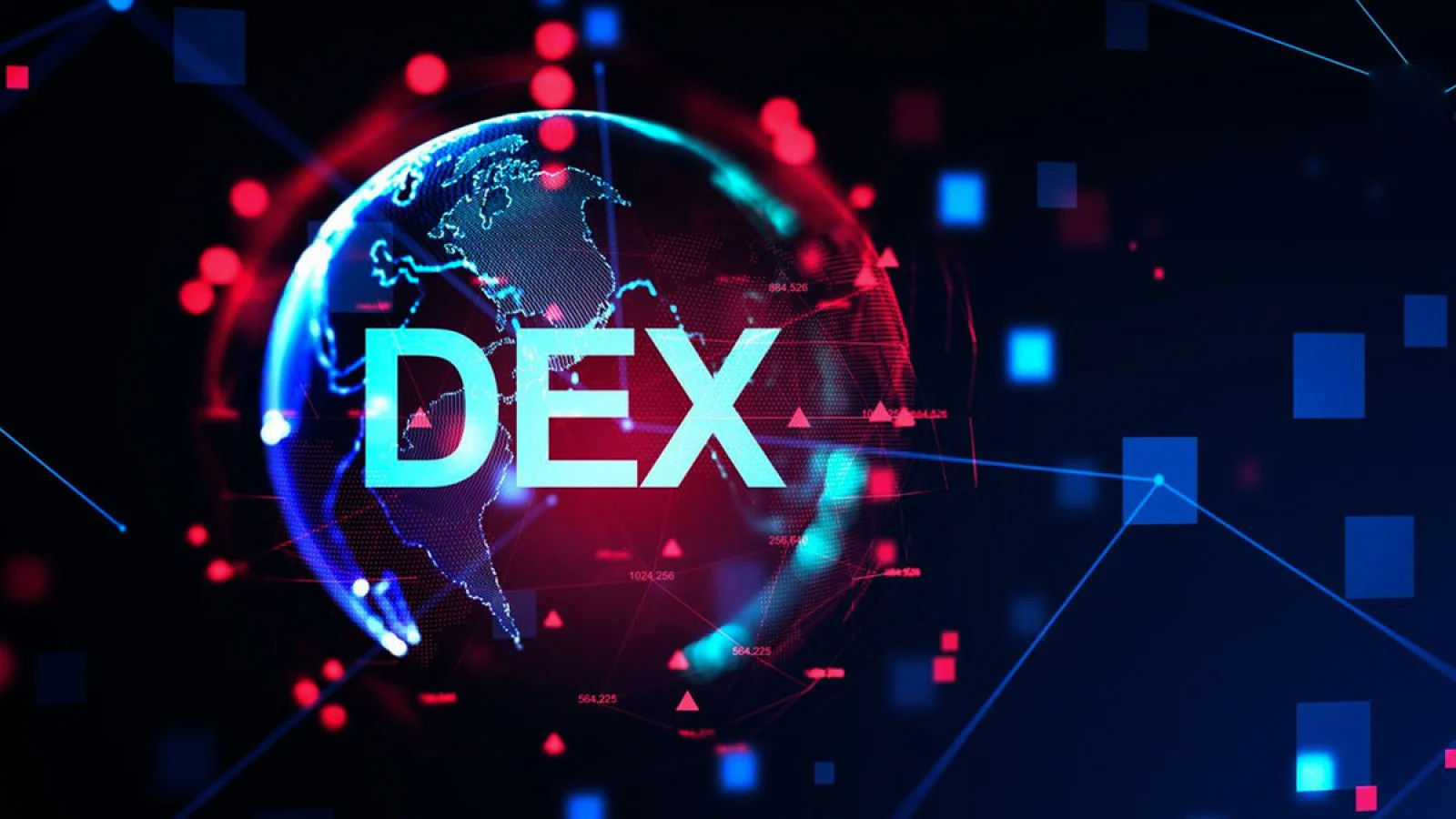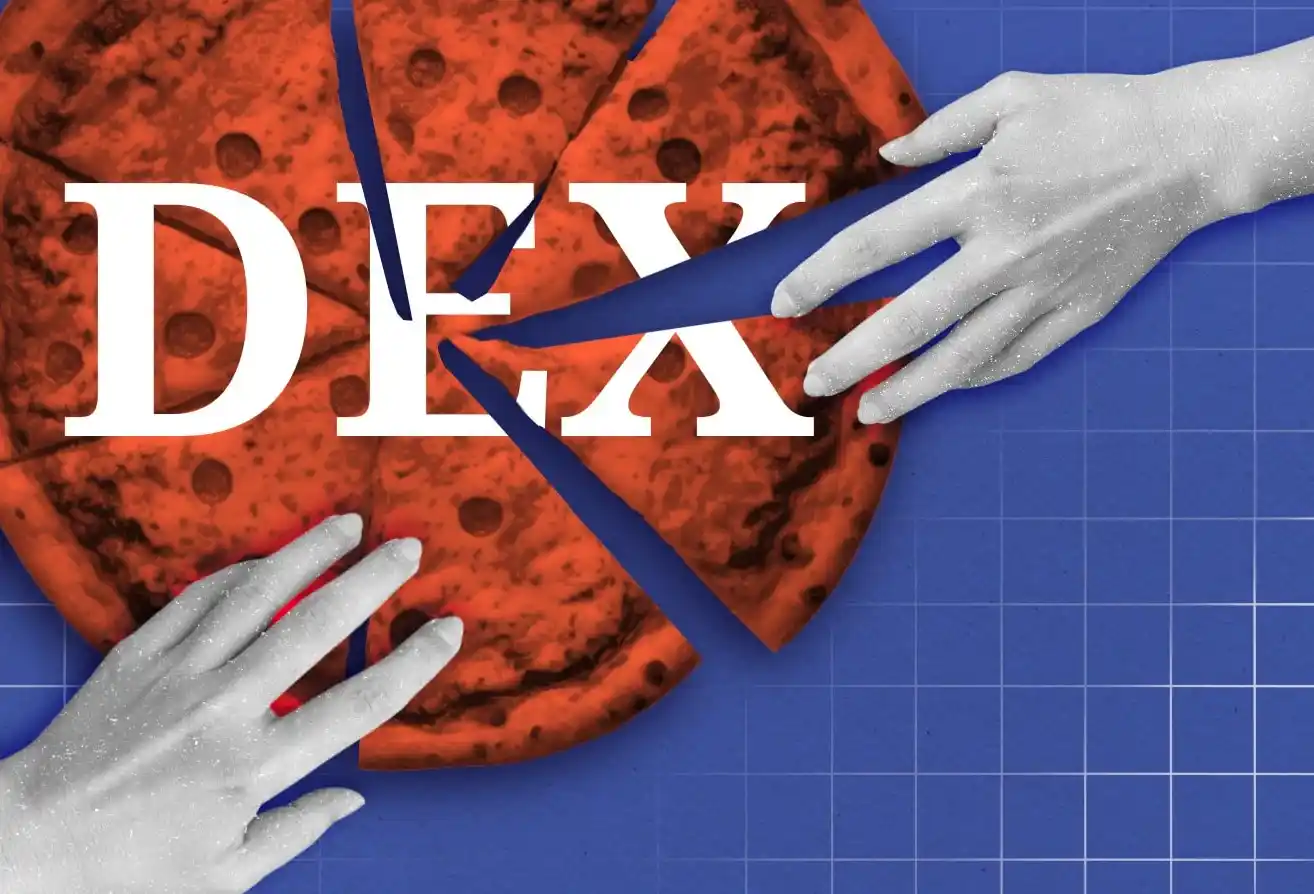If in the past, decentralized exchanges (DEXs) provided limited asset options with low liquidity, high fees, and slow transaction times, everything has changed now. Current DEXs not only offer abundant liquidity but also come with many attractive features. If you’re looking for the best DEX to trade alongside centralized exchanges, then the list of the top 3 best decentralized exchanges in 2023 will be useful to you.
Read more: What is a decentralized exchange? Things you need to know about decentralized exchanges.

Top 3 Best Decentralized Exchanges in 2023
1. Uniswap
Uniswap is the first name on the list of the best decentralized exchanges and is also the largest DEX on the Ethereum network. Uniswap is known for introducing the automated market maker (AMM) model, and it was launched on November 2, 2018, by Hayden Adams.
Uniswap is a strong choice for those looking to grow their assets. As an AMM DEX, Uniswap manages its decentralized liquidity pools through an algorithm, aiming to determine the best exchange rate for each trading pair. Users can use existing liquidity pools or even create their own. Liquidity providers earn fees from transactions. This platform is entirely governed by a decentralized autonomous organization (DAO), meaning its users have control.
Due to the impact of the cryptocurrency winter, Uniswap’s current statistics are modest. As of September 2023, Uniswap has a total value locked (TVL) of $3.15 billion (much lower than its all-time high TVL of $10.24 billion in May 2021), with the highest allocation on Ethereum being $1.95 billion. It has attracted over 5.7 million cryptocurrency traders, with a current market capitalization of $414 million, and is integrated into more than 300 DeFi applications and programs.
Currently, Uniswap has launched three different versions, each with improvements and increased usability.
Uniswap V1 is the original version of the protocol, introduced in November 2018, and it introduced the AMM liquidity model.
In May 2020, Uniswap V2 was launched to address the shortcomings of V1. Uniswap V2 is more user-friendly and also solves the Ethereum congestion issue that V1 users faced, allowing trading of tokens other than ETH or ERC20 on the platform.
In May 2021, Uniswap V3 was introduced along with further upgrades to the AMM-based DEX. This version is more advanced, user-friendly, and adds flexibility and features to its DEX. A new concept of concentrated liquidity was added to the platform, allowing liquidity providers to focus their liquidity within a customized price range.
Advantages of Uniswap:
- Supports 8 different chains: Ethereum, Arbitrum, Optimism, etc.
- Offers over a thousand types of assets.
- Large, reputable, and long-standing exchange platform.
- High trading volume.
- Managed by a DAO.
- Users can generate passive income through staking.
- Transaction fees range from 0.1% to 1%.
Disadvantages of Uniswap:
- No fiat currency trading.
- Risk of impermanent loss always exists.
2. Curve Finance
Curve Finance is a decentralized exchange (DEX) protocol built on the Ethereum blockchain, focusing on stablecoins and low-volatility tokens. Since its launch in June 2020, it has quickly become popular and is among the top DEXs in the DeFi ecosystem.
Curve is an AMM platform with many similarities to Uniswap and Balancer, but it differs in that it only provides liquidity pools made up of assets that behave similarly, such as stablecoins or wrapped versions of similar assets like wBTC and tBTC. This approach allows Curve to use more efficient algorithms, with lower fees, slippage, and temporary loss compared to any other decentralized exchange (DEX) on Ethereum.
As of September 2023, Curve has a TVL of $2.1 billion (much lower than its all-time high TVL of $24.15 billion in January 2022), with the highest allocation on Ethereum being $2.82 billion.
Advantages of Curve Finance:
- Supports multiple chains, including Ethereum and 11 others.
- Offers multiple liquidity pools to choose from.
- Allows users to earn tokens by providing liquidity.
- Low fees.
- Minimizes slippage.
- Eliminates impermanent loss for stablecoin pairs.
Disadvantages of Curve Finance:
- Heavily dependent on the Ethereum blockchain, which has high transaction fees.
- Not user-friendly for beginners.
- No mobile app available.
3. PancakeSwap
PancakeSwap is a decentralized exchange (DEX) on the Binance Smart Chain (BSC) that uses an automated market maker mechanism to facilitate token swaps. It was launched in September 2020 by an anonymous development team.
It is the largest exchange in the BNB Chain ecosystem and one of the top DEXs by market share. PancakeSwap offers various features to users, including token swaps, liquidity provision, farming, staking, lotteries, NFT markets, launchpads, and more. It provides a more comprehensive DeFi experience with access to various financial products within one interface. This user experience is often derived from centralized exchanges operating with large operational teams and massive funding. DEXs tend to focus on one or two financial products and stick to them.
PancakeSwap also has its governance token called ‘CAKE,’ which allows holders to vote on proposals. CAKE is also rewarded to liquidity providers and investors.
As of September 2023, PancakeSwap has a TVL of $1.35 billion (much lower than its all-time high TVL of $7.8 billion in May 2021), with the highest allocation on BSC being $1.275 billion.
Advantages of PancakeSwap:
- Supports transactions on multiple chains, including BSC and 8 others.
- Offers various services similar to centralized exchanges.
- Built on BSC for faster and cheaper DeFi compared to its Ethereum counterparts.
- Provides the best liquidity on the Binance Smart Chain.
- Strong foundation, community, and development roadmap.
- Users can earn various non-fungible tokens (NFTs).
- Users are highly rewarded for contributing to the platform’s liquidity.
Disadvantages of PancakeSwap:
- Temporary losses in liquidity pools.
- Predictions and lotteries can lead to quick losses (gambling).
- Network congestion due to its popularity.
- BSC is known for hosting scam projects and tokens.
Conclusion.
In conclusion, the above information provides a summary of the top 3 best decentralized exchanges in 2023, as compiled by AZCoiner. The evaluation criteria for selecting these exchanges are based on credibility, trading volume, user count, total value locked, and other factors. Ultimately, the choice of a trading platform should align with your goals and trading preferences.






